(1012 products available)






















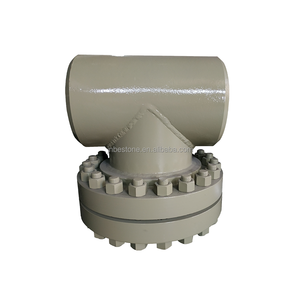


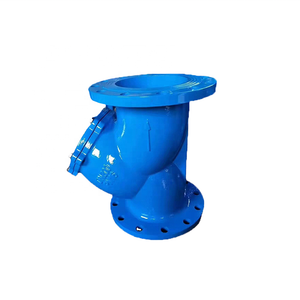




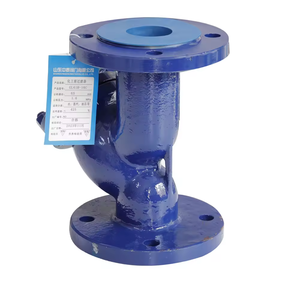
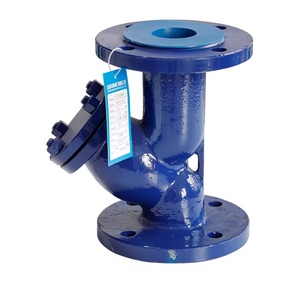














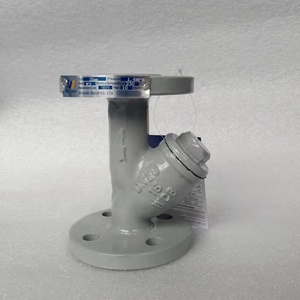

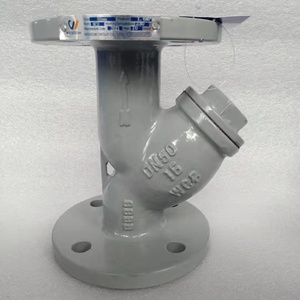
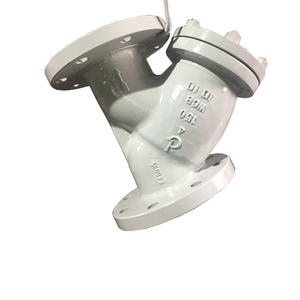



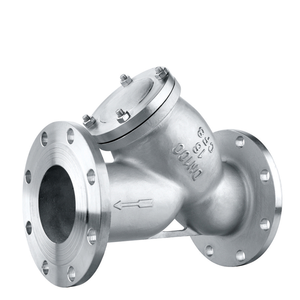
















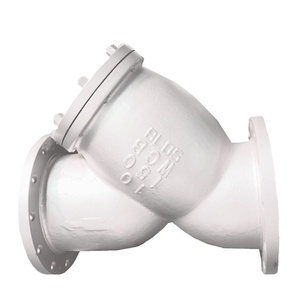







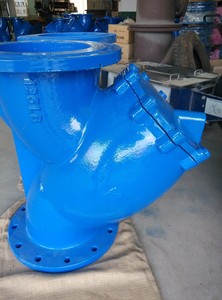
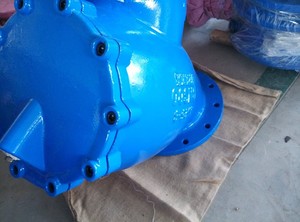


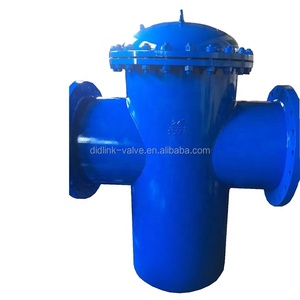


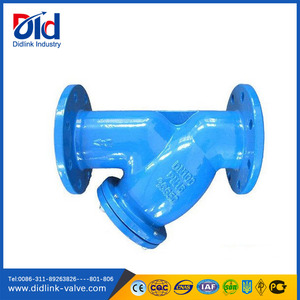











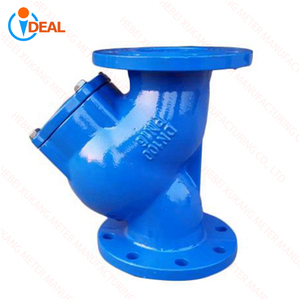
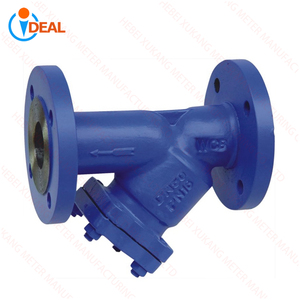

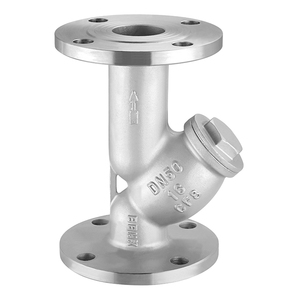

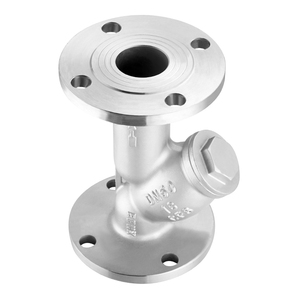



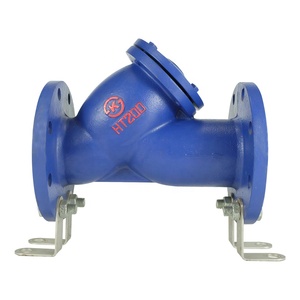



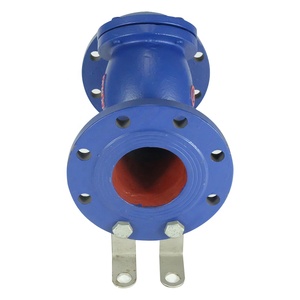






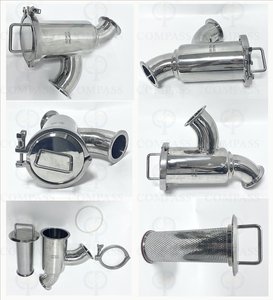


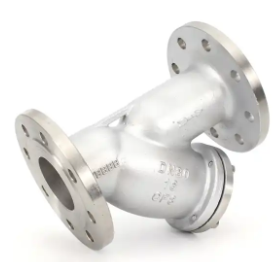




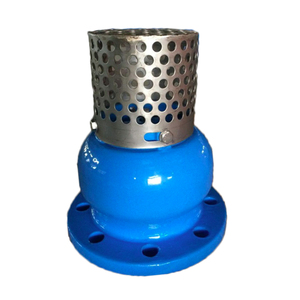




Flanged strainers are critical components used in various industries to protect equipment from damage due to debris and contaminants in the fluid. The primary function of a flanged strainer is to filter out unwanted particles from the flow, ensuring smooth operation and longevity of pumps, valves, and other mechanical devices. With a design that includes flanged connections, these strainers can be easily integrated into existing piping systems. They are commonly found in sectors such as oil and gas, water treatment, power generation, and food processing, where maintaining system integrity is paramount.
Flanged strainers can be classified into different types based on their mesh size. The classification can also be done based on the material they are made of and their structural configuration. These classifications give an overview of how flanged strainers work and their various types. It also helps understand which flanged strainer would be better suited for a specific use. Although the working principle remains relatively similar for most types, the specific design features may vary depending on the application requirements and industry standards.
Flanged strainers can be classified into various types based on their design and functionality.
According to the shape of the mesh:
There are various shapes of meshes that can be used in flanged strainers. The different shapes include square mesh strainers, round mesh strainers, and hexagonal mesh strainers. Square mesh strainers have a square-shaped opening. Round mesh strainers have a circular shape, and hexagonal mesh strainers have hexagonal shapes.
According to the type of cleaning:
One can clean flanged strainers in two ways: manual cleaning and automatic cleaning. Manual flanged strainers require the operator to clean the screen periodically, while the automatic flanged strainer cleans the screen automatically using an automatic cleaning system.
According to the material of construction:
Flanged strainers are made from various materials, such as cast iron, stainless steel, bronze, and PVC. Cast iron flanged strainers are suitable for high-pressure applications, while stainless steel flanged strainers work well in corrosive environments. Bronze flanged strainers are suitable for water and steam services. PVC flanged strainers are lightweight and suitable for low-pressure applications.
According to the structural configuration:
There are several structural configurations of flanged strainers, such as Y-type strainers, T-type strainers, and basket strainers. Y-type strainers have a slant body in the shape of the alphabet Y, which allows for easy flow of fluids. T-type strainers have a vertical and horizontal part in the shape of the alphabet T, which makes them suitable for applications where space is limited. Basket strainers have a cylindrical basket inside them that collects debris at the bottom.
The design of flanged strainers is a combination of form and function. They are intended to be practical and easy to use, while also making sure they work well at keeping systems clean.
Mechanical design
Flanged strainers are made as cylindrical devices with a mesh or perforated screen inside them. This screen captures debris, while the cylindrical shape allows fluid to flow through easily. The flanges on either end of the strainer body facilitate easy connection to pipes. They often feature threaded or welded openings for attachment to the piping system.
Materials
Flanged strainers are subjected to harsh conditions, so they need to be durable. They are usually made from materials like cast iron, stainless steel, or bronze. These materials are chosen because they can withstand pressure and resist corrosion from different types of fluids.
Safety features
Many flanged strainers have pressure relief valves or removable covers, which make it safer and easier to maintain the device. These features help prevent accidents due to excessive pressure buildup and allow for quick cleaning or replacement of the strainer mesh.
Quality control
Quality control measures during manufacturing ensure that flanged strainers meet industry standards for performance and reliability. This includes testing for material strength, corrosion resistance, and proper fit of the flanges to ensure a tight seal when installed in a piping system.
Additionally, the design process involves considering the ease of maintenance and installation. Strainers are equipped with removable and cleanable screens, allowing for convenient debris removal. The flanged connections facilitate straightforward installation and replacement within existing piping systems, minimizing downtime during maintenance.
Overall, the design of flanged strainers prioritizes durability, efficiency, and safety, making them a reliable choice for protecting critical equipment in various industrial applications. They are designed to be strong and efficient so that they can work well in different industries, protecting important machines from getting damaged.
Flanged strainers are used in various industries and applications. They are essential for maintaining the efficiency and reliability of fluid systems. Here are some typical cases where flanged strainers are needed:
Power generation industry:
Flanged strainers are used in the power generation industry. They protect pumps, turbines, and other critical equipment from debris in cooling water systems. For example, in a coal-fired power plant, the strainer removes particles like rust, sediment, and biological matter from the cooling water that passes through the condenser. This helps to keep the cooling water system running well and prevents damage or downtime from blocked or worn-out pumps and turbines.
Oil and gas industry:
In the oil and gas sector, flanged strainers are used in many places, such as offshore platforms, refineries, and pipeline systems. They filter out dirt and debris from crude oil, natural gas, and processed fuels. This protects valves, meters, and other important parts from damage due to solid particles in the fluids. It also helps to keep the oil and gas processing systems running well and improves the safety and efficiency of fuel production and delivery.
Chemical processing industry:
Flanged strainers are commonly used in chemical processing plants. They are used to protect heat exchangers, reactors, and pumps from solid particles in the process fluids. Removing the debris prevents damage to sensitive equipment and helps to keep chemical reactions and product mixing efficient. It also helps to improve the quality and purity of chemical products by reducing contamination from solid materials.
Water treatment facilities:
Municipal water treatment plants and industrial wastewater facilities use flanged strainers to filter out large debris from incoming water sources. This protects the treatment equipment from damage and helps to improve the overall effectiveness of the water treatment process. Strainers remove items like leaves, plastic, and other visible trash from the water before it undergoes further treatment. This helps to ensure clean and safe water for public use and environmental discharge.
HVAC systems:
Flanged strainers are used in heating, ventilation, and air conditioning (HVAC) systems. They protect coils, valves, and other components from dirt and debris in the cooling and heating fluids. Removing the solid particles helps to prevent energy loss and improve temperature control. It also keeps the HVAC system running efficiently and extends the lifespan of critical components in buildings and industrial facilities.
For business buyers and engineers, selecting the right flanged strainer involves considering various technical factors to ensure optimal performance and system compatibility.
Flow capacity and pressure rating:
Determine the flow capacity and pressure rating of the system where the flanged strainer will be installed. Choose a strainer that can handle the required flow and pressure without causing excessive turbulence or pressure drops.
Material compatibility:
Consider the materials used in the system and their compatibility with the flanged strainer. Select a strainer constructed from materials that can withstand the fluid or gas being filtered, as well as any corrosive or hazardous substances.
Filtration requirements:
Determine the filtration requirements of the application. Consider the size and type of particles that need to be filtered out. Choose a flanged strainer with an appropriate mesh size or straining element to capture the desired particles while maintaining flow efficiency.
Installation and maintenance:
Evaluate the ease of installation and maintenance of the flanged strainer. Look for features such as convenient mounting options, accessible cleaning or replacement of the straining elements, and the availability of maintenance tools or indicators. Consider any specific installation requirements or recommended practices provided by the manufacturer.
Industry standards and certifications:
Verify that the flanged strainer complies with relevant industry standards and certifications. Check for approvals from organizations such as the American Society of Mechanical Engineers (ASME) or the National Sanitation Foundation (NSF). Compliance with standards ensures that the strainer meets safety and performance requirements.
Supplier reputation and support:
Choose suppliers and manufacturers with a good reputation in the industry. Consider their track record of producing reliable products and providing excellent customer support. It is important to have confidence in the quality and performance of the flanged strainer, as well as the availability of technical assistance and warranty support from the supplier.
Cost considerations:
Consider the cost of the flanged strainer, but also take into account its overall value. Balance the initial purchase price with factors such as durability, maintenance requirements, and potential energy savings. Avoid compromising quality for the sake of cost but seek a reasonable and cost-effective option.
Q1. What is the purpose of a flanged strainer?
A1. The flanged strainer is a type of filtering device used to remove any unwanted particles or debris from the fluid that passes through it.
Q2. How does a flanged strainer work?
A2. The flanged strainers create a barrier that captures all the particles and allows only clean fluids to pass through their mesh or perforated element.
Q3. Where can flanged strainers be used?
A3. Flanged strainers are commonly used in various industries, including water supply, oil and gas, chemical processing, food and beverage, and HVAC systems.
Q4. What are the benefits of using flanged strainers?
A4. Benefits of using flanged strainers include protecting equipment from damage due to debris, improving system efficiency, reducing maintenance costs, and extending the lifespan of downstream components.
Q5. How does one select the right flanged strainer?
A5. When choosing a flanged strainer, factors such as application requirements, flow rate, pressure rating, temperature, and the type of fluid being filtered should be considered.
Q6. What types of flanged strainers are available?
A6. Flanged strainers come in various types, including Y strainers, basket strainers, and disk strainers, each designed for specific applications and filtering needs.
Q7. How does one install a flanged strainer?
A7. To install a flanged strainer, align the flanged ends with the corresponding pipe flanges, secure them using bolts, and ensure proper orientation according to the flow direction.
Q8. How does one maintain a flanged strainer?
A8. Regularly inspect the flanged strainer, clean or replace the filtering element as needed, and check for any signs of leaks or damage to ensure proper functioning.